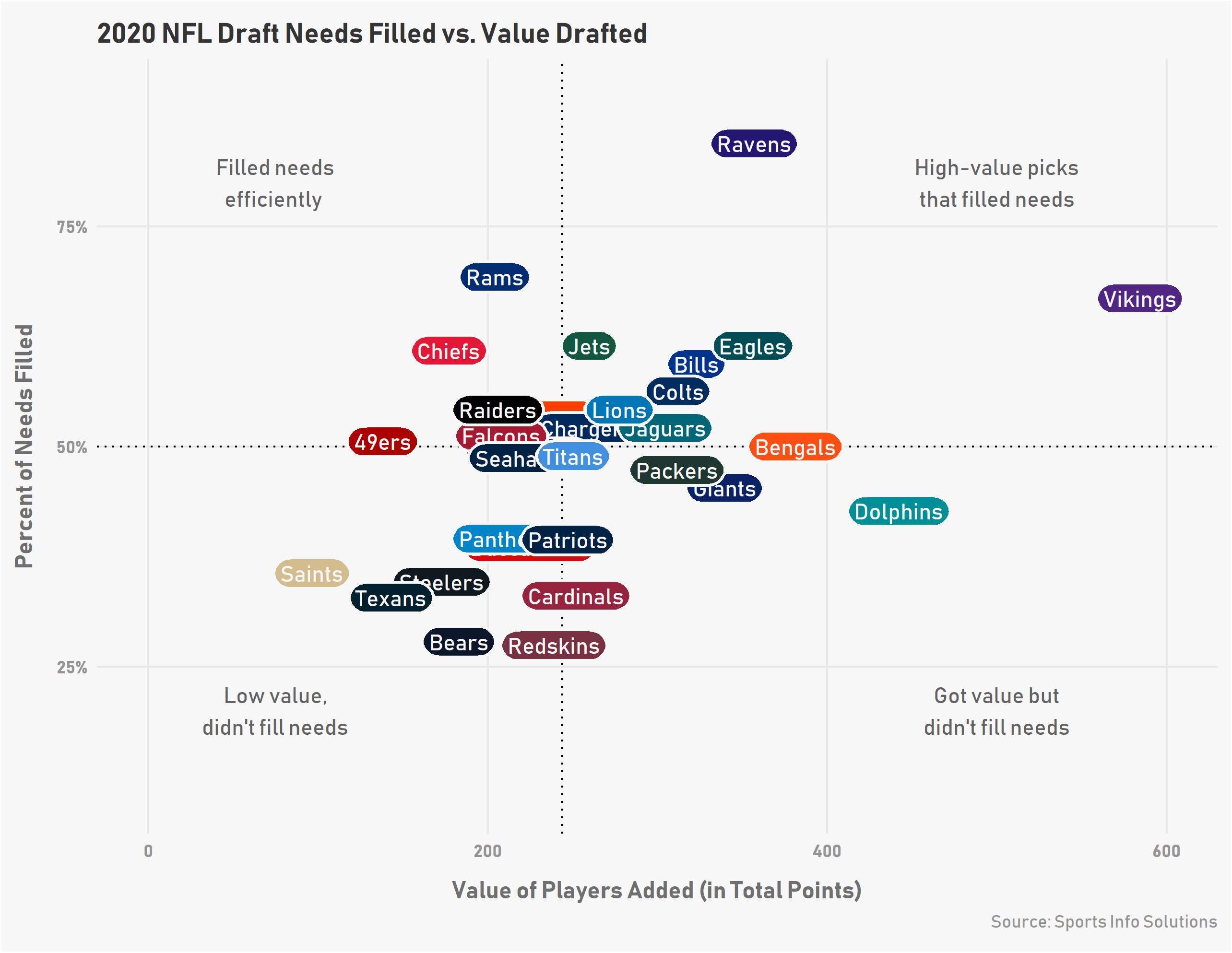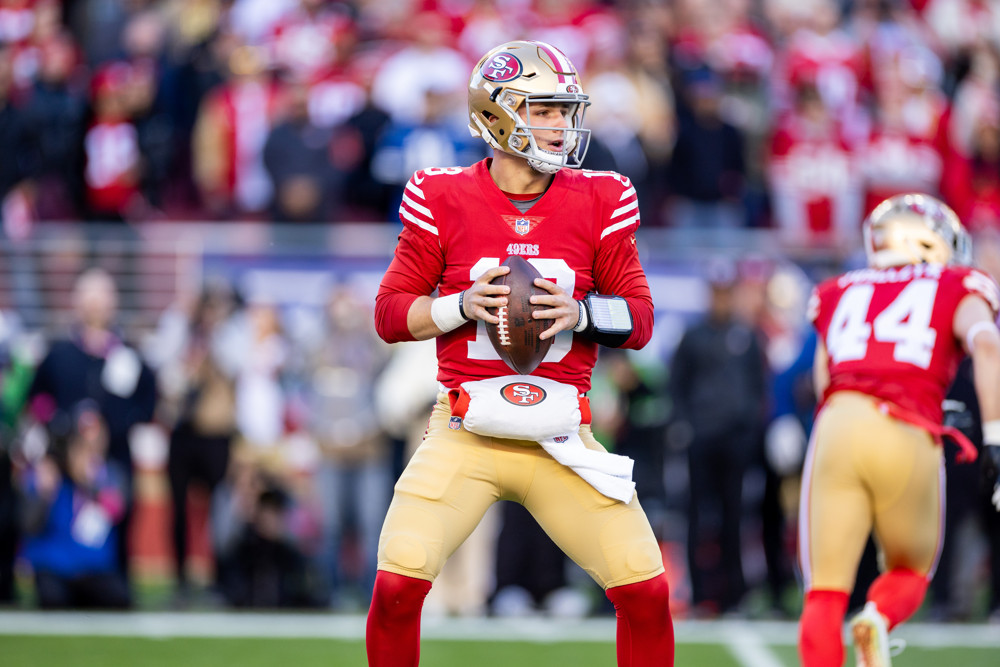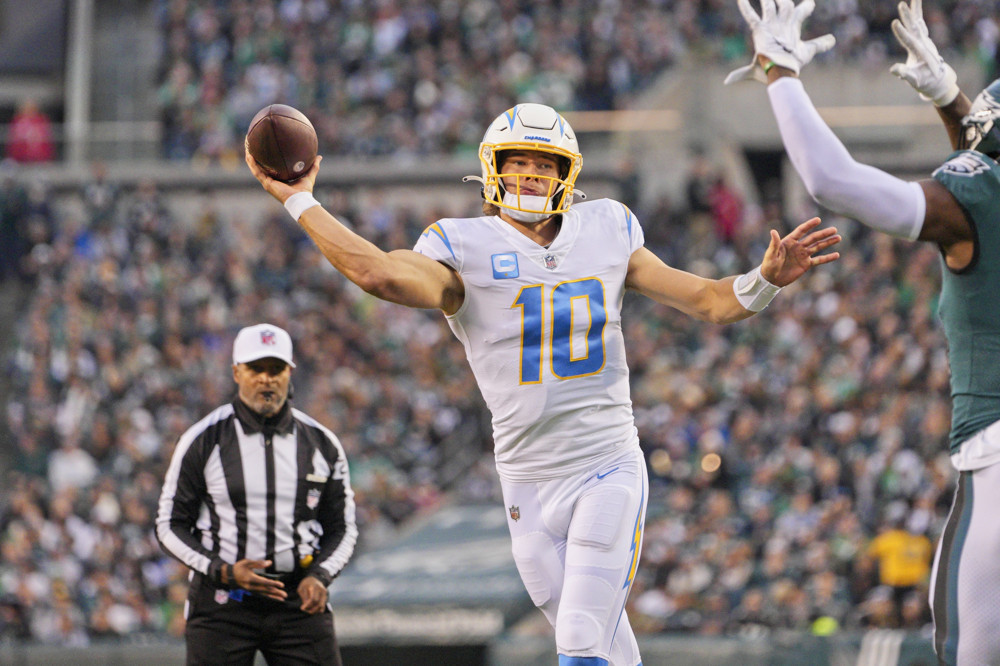By ALEX VIGDERMAN
There is already a veritable corpus of NFL Draft recap content out there. So, to differentiate, here’s a recap that features few opinions and hinges on a statistic that no one else is in a position to use as the basis for their recap.
We’ve told you before that we implemented a college version of our catch-all football statistic, Total Points. We use a player’s full body of work (provided he went to an FBS school) and tabulate his value in terms of Expected Points Added, tacking on an adjustment for the quality of competition he faced.
I suspect that by next year we’ll have a model for draft pick value, but for now I’m not so comfortable with implementing such a thing because we only have two seasons of Total Points data in college. I’m certainly excited for that to come.
For this piece, to keep things nice and clean, I calculated a weighted average of each player’s Total Points over the past couple seasons and added up these averages for every pick for every team. That gives us a rough estimate for how much value a team got from its picks.
Each team’s needs were based on the data used for the Football Rookie Handbook team pages, but updated for changes post-free-agency. I estimated the extent of a need by subtracting from 100 percent each team’s percentile rank at a position. For example, the Bengals were in the third percentile at QB before drafting Joe Burrow No.1, so they had a need denominator of 97 percent.
To measure how well a team met its needs, I took a simple measure. If you drafted a player in the first three rounds at a position, you got credit for filling the need. If you only took players on Day Three to fill that need, you got half credit.
Sum up the need totals and divide the acquired player totals by that, and you get a percentage of needs filled. Simple, clean, and pretty accurate of how we’d evaluate a team. The Bengals and Packers each took a quarterback in the first round, but because the Bengals had a much larger need they get much more credit for their selection.
Let’s take a look at how teams fared by this method.

High-value picks that filled needs
The Vikings have gotten a lot of credit for accumulating picks over the course of the draft, and you can see the fruits of their labor by how far ahead of everyone else they are in terms of Total Points acquired. Taking a quarterback at all (Iowa’s Nate Stanley) helps, but they also loaded up on high-performing defensive players in the back end of the draft.
The Ravens didn’t have a glut of selections, but they targeted holes really efficiently. Their three biggest needs by a mile were at defensive tackle, wide receiver, and linebacker. They spent four picks in the first three rounds on those positions alone.
Got value but didn’t fill needs
The other team that had a ton of picks to work with was the Dolphins, who get a lot of credit for taking Tua Tagovailoa at the top of the first round. Their other picks in the first round were a mixed bag in terms of filling needs, though, as they addressed a dire need along the offensive line with USC’s Austin Jackson, but their selection of cornerback Noah Igbinoghene from Auburn comes off as odd considering that was a position of relative strength last season.
Filled needs efficiently
Teams that fell into this category tended to be Super Bowl 54 participants, interestingly.
The 49ers only made five selections in the draft, but they attacked spots that made sense. They traded Marquise Goodwin during the draft, and then drafted multiple wide receivers (including first rounder Brandon Aiyuk of Arizona State) after also losing Emmanuel Sanders to free agency. They filled another need created by a trade by taking Javon Kinlaw to replace DeForest Buckner at defensive tackle.
The reigning Super Bowl Champion Chiefs were also short-handed from a draft pick perspective, but they did well with the resources they had. Kansas City struggled at linebacker in 2019, so the selection of Willie Gay Jr. from Mississippi State in the second round was crucial to their draft success. And while there is reason to quibble with the draft capital used, adding a dynamic running back to the mix in Clyde Edwards-Helaire from LSU makes that offense even more threatening.
Low value, didn’t fill needs
To some extent it’s unfair to punish teams that had few picks, but the Saints didn’t use their limited bullets to the same effect that the teams above did. Their first round pick, Cesar Ruiz from Michigan, is more of a depth selection from a 2020 perspective considering the current state of New Orleans’ offensive line. And while it’s still prudent to take shots at quarterbacks with Drew Brees nearing the end of the line, by this method spending one of your four picks on a QB doesn’t look very efficient.
The Bears‘ draft was unlikely to be evaluated very well by this method, considering they already traded for Nick Foles to bolster their quarterback room and just drafted David Montgomery so they were unlikely to use a lot of capital to replace him. That said, besides spending multiple picks on their biggest need (cornerback) they failed to address any of their next five biggest needs from a Total Points perspective.


